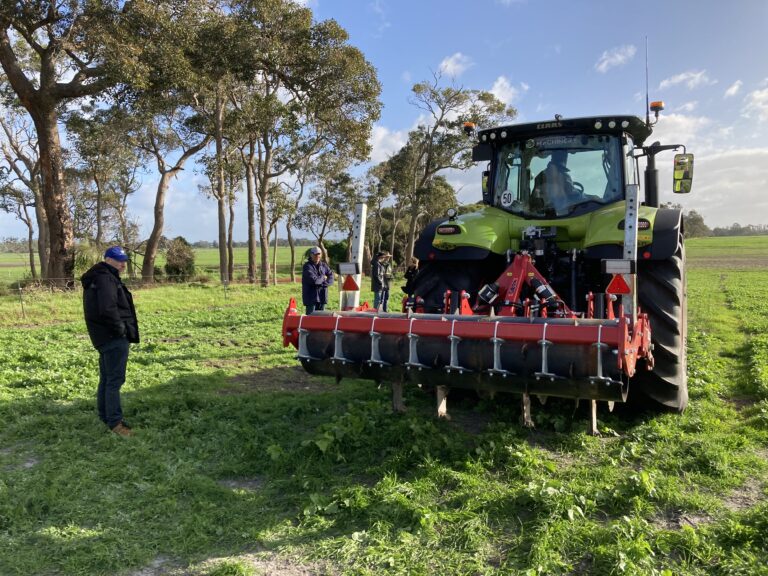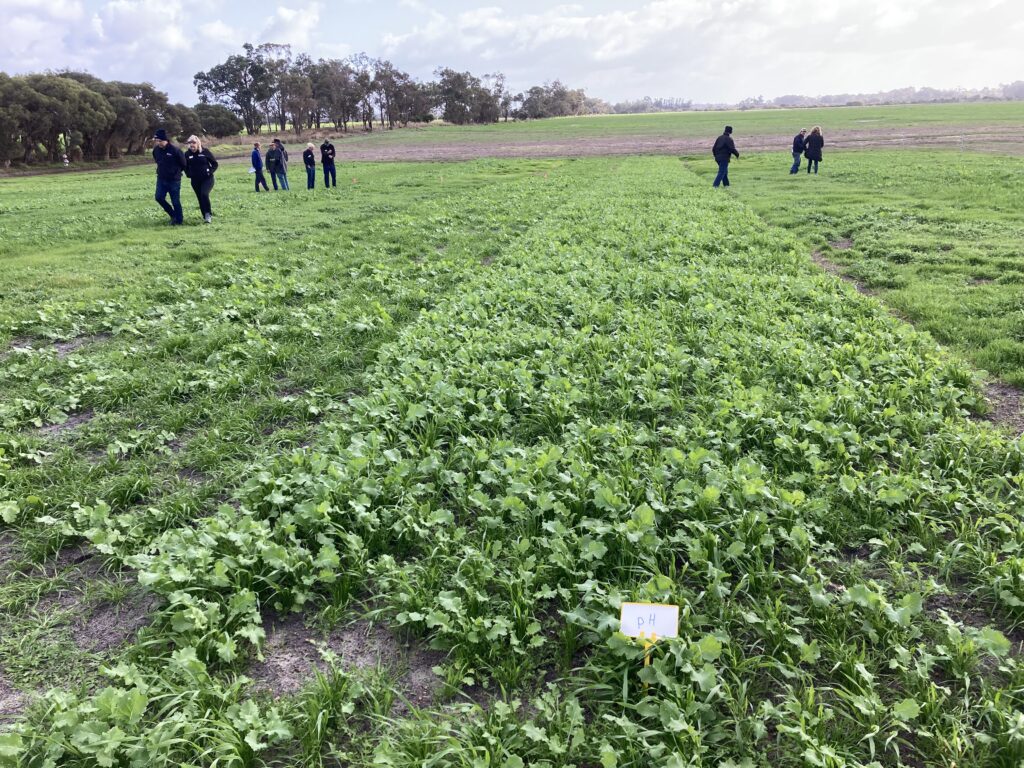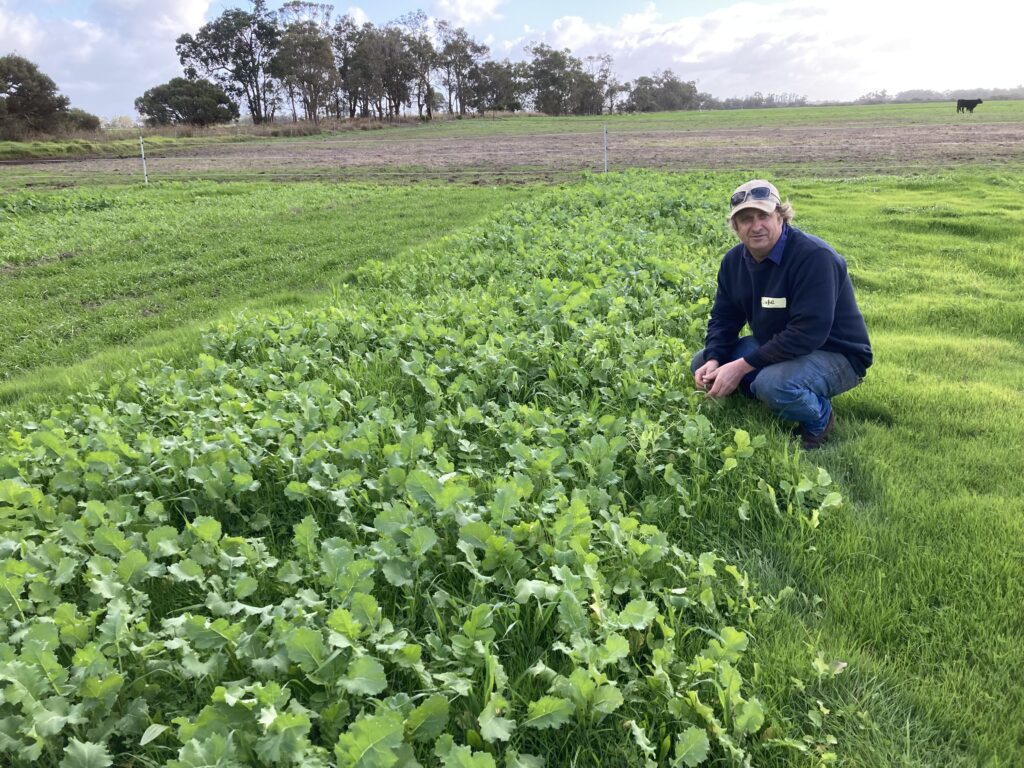
Local farmers were surprised to see the performance of a liming treatment at the Pasture Challenge field walk south of Busselton last week.
The Pasture Challenge is a trial with a difference, with farmers getting into groups and designing treatments to overcome soil constraints and improve pasture production.
The package designed by the ‘pH group’, which included incorporating 5 tonnes of lime per hectare into the topsoil and reseeding with a mixed pasture, stood head and shoulders above its competitors when farmers visited the site for their first look for the growing season.
Nobody was more surprised than pH group member Simon Williams.
“It has surprised me how good the lime has done, if it is the lime that has caused the effect. I didn’t expect it to be that impressive.”
Fellow competitor Luke Norton had to agree, although with a caveat to cost.
“The trial looks really good. Graham (Mussell, project agronomist) has done a really good job. The pH treatment looks great, really even, but will reflect in cost.”
Luke was satisfied that his ‘Biology’ group was tracking well with its own pasture mix partially targeted towards breaking up soil compaction which was identified by baseline soil testing with a penetrometer last spring.
“Ours is going really well. The Sodbuster and Pillar rape seem to have germinated at an even rate.”
Trial host, Annette Battley, was also impressed with the liming, but is still backing her ‘Rippers’ group.
“Obviously the pH group is going gangbusters, but it’s going to plateau out and the rippers treatment will come through. We haven’t tried to give it a big punch yet.”
The big fertiliser punch will come sooner than later after Annette’s three trial plots were ripped to 400 mm by a low disturbance subsoiler which was demonstrated on the day by Margaret River Machinery. Prior to the demonstration, there was conjecture over when the soil should be ripped, given the water-repellent soil is still somewhat dry below the surface.
“The decision to rip today rather than waiting was because the machine was gentle. If we used (a rougher) machine we would have waited after (imminent pasture yield cuts and) grazing it. Now that it has been opened up, I think the rain will get deeper into the profile.”
Despite its early lead, the pH treatment is showing signs of micronutrient deficiency. This was expected because increasing pH (which was between 4 and 5 when baseline soil tests were done) reduces the availability of micronutrients such as copper, zinc and manganese. Also, copper was deficient in one of four baseline tissue tests conducted last spring. Correcting these deficiencies is a vital part of soil remediation on livestock properties because deficiencies can affect animal health. The high lime rate is generally avoided on a broad scale to avoid such issues, but plots are less that 500m2 in total. Tissue tests are being conducted this week to confirm which elements are deficient, with treatments to be applied as soon as practicable.
However, Simon Williams is not fazed by the deficiency.
“I think we need to get pH to 6 so plants grow more roots, but then we need to correct any deficiencies that come with that. For me, pH needs to be corrected first, then look at the mineral deficiencies, then the compaction.”
The three replicated treatments mentioned above have one other competitor that was less impressive, but no doubt will come into its own in spring. Dubbed the ‘Meat and Potatoes’ treatment, it features a standard reseeded clover and ryegrass mix.
The next site visit will take place on Tuesday August 8. For more information and to be kept up to date with progress, register your interest in the project here.


The Pasture Challenge project is delivered by South West NRM and supported by Western Beef Association Inc. It is part of the Soil Wise project, funded by the National Landcare Program Smart Farms Small Grants – an Australian Government Initiative. It is supported by Healthy Estuaries WA – a State Government program.
